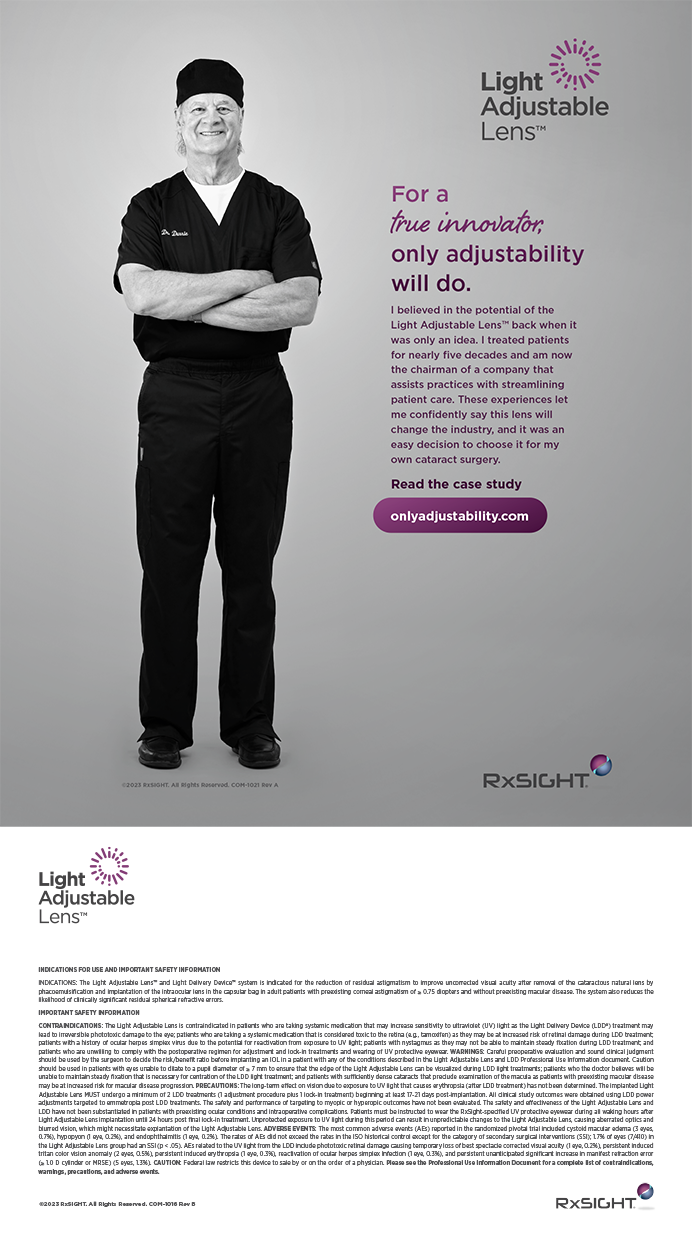The pursuit of perfection demands that we be open-minded and willing to take risks and challenge ourselves to learn everything we can in our field of expertise. Let us pause to consider some of the innovations of the past decade to help us handle routine and difficult cataract cases: advanced phaco software that minimizes the generation of heat, ophthalmic viscosurgical devices with various properties to manage space in the eye, microsurgical instrumentation that allows us to operate through smaller incisions, tension rings and segments that salvage damaged capsules, pupillary expansion devices that enhance visualization, and femtosecond lasers that presoften dense cataracts. These advances are remarkable, but their value decreases if we surgeons lack proper education on how to approach complexities or if we fail to plan carefully.
I have encountered my share of complications—dropped nuclei, choroidal hemorrhages, Descemet detachments, wound burns, iatrogenic zonular dialyses, and more. I actively seek new techniques and take on tough cataract cases to improve my skills. In the past few years alone, I have learned how to use capsular tension segments, suture an IOL to the sclera through new techniques, and reduce complications with a femtosecond laser. I owe a debt of gratitude to surgical superheroes such as Ike Ahmed, MD, Michael Snyder, MD, and so many others who share their knowledge and skills through lectures, articles, and videos on demand. Without their generosity and passion for teaching, many of us would not be able improve our own skills. I also find that recording all of my cases and reviewing my complications are of tremendous value: I can think through what went wrong and what I could have done better. The hardest thing to learn is still how to stay calm, stop, and think in a critical situation.
I am sure not a week goes by without our all facing a complex or challenging case. Whether we are fresh out of training or have been practicing for more than 30 years, these cases define our successes and failures, and they are what motivate us to be better surgeons. How we approach these challenges may differ. Some of us use basically the same techniques and instrumentation we did in our training. Others of us continually push the boundaries with new devices and technologies. Most of us fall somewhere in between, but all of us have a responsibility to continually improve our skills, our techniques, and the quality of our results.
This issue of CRST features a series of articles by highly talented surgeons on the management of complicated cases. I hope that this resource helps us all become better surgeons. Sometimes, learning a new technique requires us to stretch beyond our comfort zone in the OR. We must all use our best judgment on how to improve our skillfulness without compromising our care of patients. With the right tools, resources, and perspective, we can accomplish both goals.n
Robert J. Weinstock, MD
Chief Medical Editor


